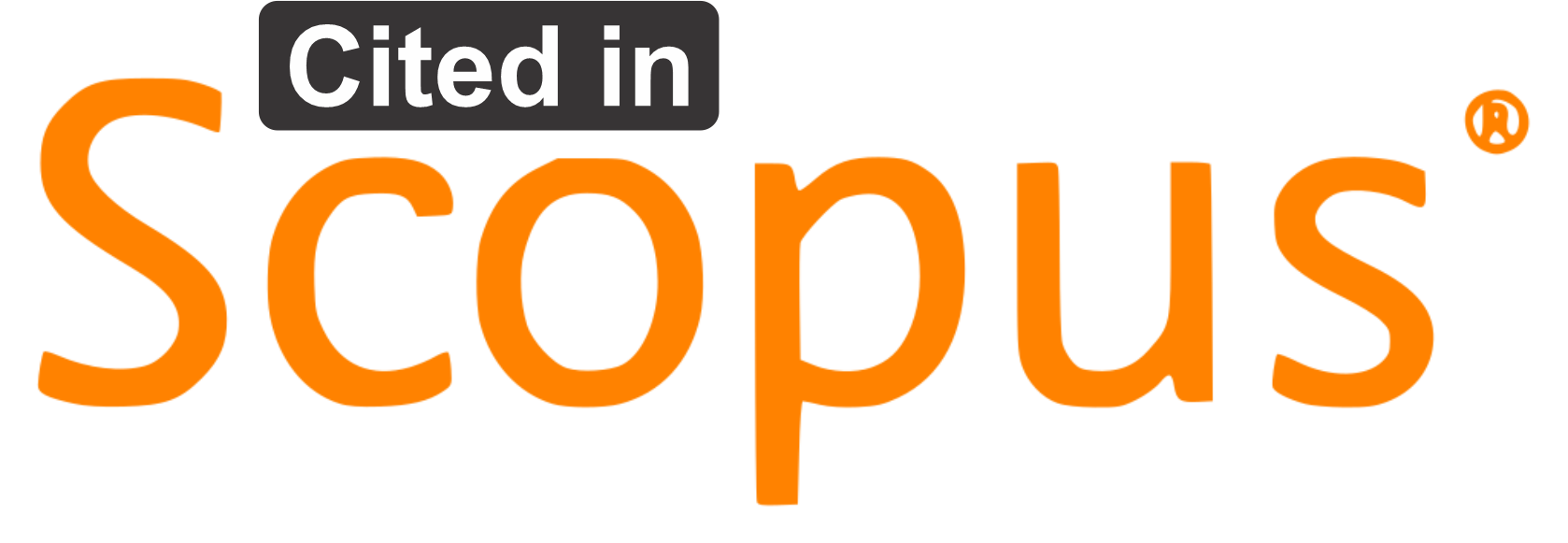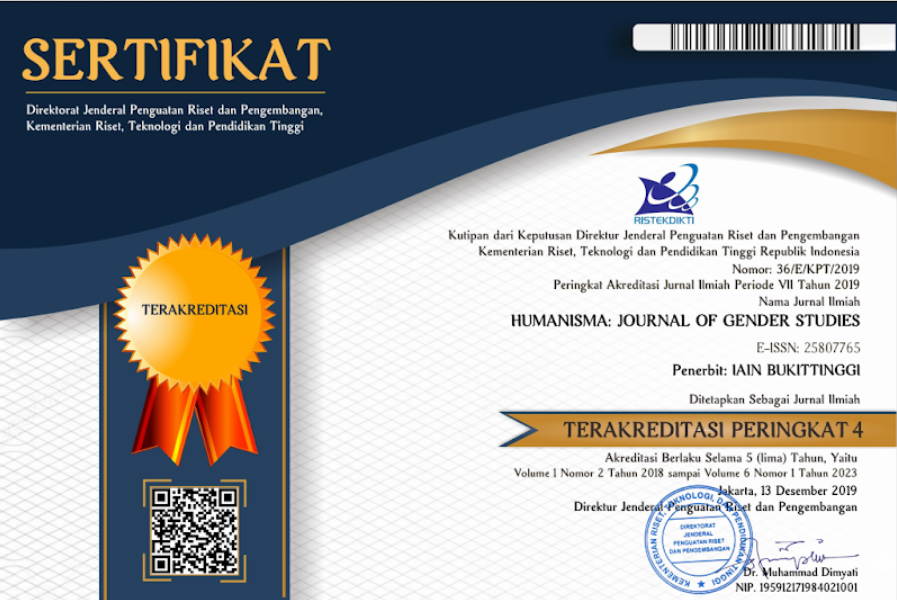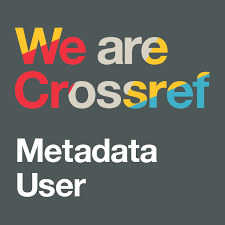How Deaf People Live: Gender, Poverty and Employment Opportunities?
DOI:
https://doi.org/10.30983/humanisma.v8i1.8829Abstract
The concept of gender equality and disability long been advocated, emphasizing equal rights and equality between human beings. However, in reality, gender, disability and poverty persists as intersecting factors that contribute to discrimination against the deaf. There are stigmatising assumptions that encourage unequal treatment of the deaf. This study aims to analyse the interrelated experiences of the deaf based on gender, poverty and employment opportunities in East Java. The research method used is qualitative with a case study approach. Data were collected through observation, interviews with 29 informants, documentation and focus group discussions (FGDs). The data were analysed using the NVivo 12 software, following a series of steps: data input, coding, exploration, visualization, and presentation. The results of the study challenge the gender disability theory which suggests that women with disabilities tend to be poorer than men with disabilities. Instead, this study found that both men and women with disabilities face similar levels of poverty and encounter difficulties in accessing labour market. Some of them are poor from birth, making it difficult to get education costs and making it difficult to find work. There are also those who have difficulty getting work because they are deaf, so they lack income to meet their needs. In addition, the result supports the existence of disability-poverty cycle among the deaf. Poverty for the deaf is exacerbated by their disability, lack of health insurance, limited access to education and skills training, and difficulties in penetrating the labour market.
References
Akhmadi, Aisyah Putri Mayangsari, Made Anthony Iswara, Nurmala Selly Saputri, and Rezanti Putri Pramana, Memberdayakan Setiap Anak Merangkul Keanekaragaman Dan Inklusi Untuk Semua: Analisis Lanskap Tentang Anak Penyandang Disabilitas Di Indonesia (Indonesia: UNICEF, 2021)
Al-Makhamreh, Sahar, ‘Hearing the Voices of Young Deaf People: Implications for Social Work Practice in Jordan’, International Social Work, 59.1 (2016), 47–59 <https://doi.org/10.1177/0020872813499057>
Banks, Lena Morgon, Monica Pinilla-Roncancio, Matthew Walsham, Hoang Van Minh, Shailes Neupane, Vu Quynh Mai, and others, ‘Does Disability Increase the Risk of Poverty “in All Its Forms”? Comparing Monetary and Multidimensional Poverty in Vietnam and Nepal’, Oxford Development Studies, 49.4 (2021), 386–400 <https://doi.org/10.1080/13600818.2021.1985988>
Bell, Bradford S., and Katherine J. Klein, ‘Effects of Disability, Gender, and Job Level on Ratings of Job Applicants’, Rehabilitation Psychology, 46.3 (2001), 229–46 <https://doi.org/10.1037/0090-5550.46.3.229>
Chaudhry, Vandana, ‘Living at the Edge: Disability, Gender, and Neoliberal Debtscapes of Microfinance in India’, Affilia - Journal of Women and Social Work, 31.2 (2016), 177–91 <https://doi.org/10.1177/0886109915622525>
Chong, Vee Yee, and Rosila Bee Mohd Hussain, ‘Deaf Identity Construction in Malaysia’, Asian Journal of Social Science, 50.2 (2022), 87–95 <https://doi.org/https://doi.org/10.1016/j.ajss.2022.02.001>
Citra, Hella, and Febria Sartika, ‘Determinants of NEET in Matrilineal Province of West Sumatra During the Covid-19 Pandemic’, HUMANISMA : Journal of Gender Studies, 6.2 (2022), 196 <https://doi.org/10.30983/humanisme.v6i2.5928>
Crowe, Teresa, ‘Domestic Violence Services for the Deaf Community.’, Journal of the American Deafness and Rehabilitation Association, 49.2 (2015), 102–19
Dammeyer, Jesper, Kathryn Crowe, Marc Marschark, and Mark Rosica, ‘Work and Employment Characteristics of Deaf and Hard-of-Hearing Adults’, Journal of Deaf Studies and Deaf Education, 24.4 (2019), 386–95 <https://doi.org/10.1093/deafed/enz018>
Disability Employment Policy, Disability and the Digital Divide: Internet Subscriptions, Internet Use and Employment Outcomes (Amerika: Disability Employment Policy, 2022)
Elder, Brent C, and Michael A Schwartz, ‘Qualitative Research within the Deaf Community in Northern Ireland: A Multilingual Approach’, Alter, 15.3 (2021), 230–48 <https://doi.org/https://doi.org/10.1016/j.alter.2021.04.001>
Erva Karimatunisa, and Taufik Muhtarom, ‘Kebijakan Pemerintah Terhadap Pendidikan Inklusif’, Journal Innovation In Education, 2.3 (2024), 101–7 <https://doi.org/10.59841/inoved.v2i3.1369>
Friedner, Michele, ‘Deaf Uplines and Downlines: Multi-Level Marketing and Disharmonious Sociality in Urban India’, Contributions to Indian Sociology, 49.1 (2015), 1–25 <https://doi.org/10.1177/0069966714558538>
Gartrell, Alexandra, Megan Jennaway, Lenore Manderson, Judy Fangalasuu, and Simon Dolaiano, ‘Social Determinants of Disability-Based Disadvantage in Solomon Islands’, Health Promotion International, 33.2 (2018), 250–60 <https://doi.org/10.1093/heapro/daw071>
GIZ, and Stefanie Ziegler, Gender and Disability in International Cooperation (München: Stefanie Ziegler Handicap International, 2014)
Granjon, Marine, Odile Rohmer, Maria Popa-Roch, Benoite Aubé, and Camille Sanrey, ‘Disability Stereotyping Is Shaped by Stigma Characteristics’, Group Processes and Intergroup Relations, November, 2023 <https://doi.org/10.1177/13684302231208534>
Hakim Hidayat, Abdul, Anisa Rahmi, Nyai Ai Nurjanah, Yusuf Fendra, and Universitas Muhammadiyah Riau, ‘Permasalahan Penerapan Pendidikan Inklusi Di Sekolah Dasar’, Jurnal Ilmu Pendidikan, 1.2 (2024), 102–11
Hartati, Yumi, and Emilia Alya Sabilla, ‘Pendidikan Bagi Masyarakat Miskin Di Yogyakarta’, Jurnal Pendidikan Ilmu Pengetahuan Sosial Indonesia, 10.01 (2023), 11–24
Hastuti, Rika Kumala Dewi, Rezanti Putri Pramana, and Hariyanti Sadaly, Kendala Mewujudkan Pembangunan Inklusif, ed. by Jakarta (The SMERU Research Institute, 2020)
Higgins, Michael, and Amy M Lieberman, ‘Deaf Students as a Linguistic and Cultural Minority: Shifting Perspectives and Implications for Teaching and Learning’, Journal of Education, 196.1 (2016), 9–18 <https://doi.org/10.1177/002205741619600103>
Hlayisi, Vera Genevey, and Lieketseng Victoria Sekoto, ‘Understanding Identity Construction among Deaf Adolescents and Young Adults: Implications for the Delivery of Person and Family-Centered Care in Audiological Rehabilitation’, Frontiers in Rehabilitation Sciences, 4.November (2023), 1–15 <https://doi.org/10.3389/fresc.2023.1228116>
Humphrey, Megan, ‘The Intersectionality Of Poverty, Disability, And Gender As A Framework To Understand Violence Against Women With Disabilities: A Case Study Of South Africa’ (Clark University, 2016)
Kell, Anna, Cindy Corbett, Donna M Kazemi, Stephen Fitzmaurice, and Robin M Dawson, ‘Transition Experiences for Individuals Who Are Culturally Deaf, Deaf, or Hard of Hearing in the United States and Canada: A Scoping Review’, Health Care Transitions, 2 (2024), 100059 <https://doi.org/https://doi.org/10.1016/j.hctj.2024.100059>
Kim, Eun Jung, Bronagh Byrne, and Susan L. Parish, ‘Deaf People and Economic Well-Being: Findings from the Life Opportunities Survey’, Disability and Society, 33.3 (2018), 374–91 <https://doi.org/10.1080/09687599.2017.1420631>
Kocakaya, Muhammed Erkam, and Kübra Polat Subaşı, Disability and Poverty As a Causality Cycle : The Case of Turkey (Istambul: İDEAL KÜLTÜR YAYINCILIK, 2023)
Lempka, Cassandra, ‘Employees Who Are Deaf or Hard of Hearing: Perceptions of Workplace Accommodations’, Ursidae: The Undergraduate Research Journal at the University of Northern Colorado, 5.2 (2019), 1–14
Lott, Virginia G., Susan R. Easterbrooks, Kathryn Wolff Heller, and Colleen M. O’Rourke, ‘Work Attitudes of Students Who Are Deaf and Their Potential Employers’, Jadara, 34.2 (2019), 31–55
Luft, Pamela, ‘Deaf and Hard of Hearing Learners With Intellectual Disabilities: Current Understandings and Remaining Challenges’, Deaf and Hard of Hearing Learners with Disabilities: Foundations, Strategies, and Resources, January, 2022, 133–61 <https://doi.org/10.4324/9781003252054-5>
Luton, Meghan, Helen T Allan, and Herminder Kaur, ‘Deaf Women’s Experiences of Maternity and Primary Care: An Integrative Review’, Midwifery, 104 (2022), 103190 <https://doi.org/https://doi.org/10.1016/j.midw.2021.103190>
Maharani, Chika, Devi Amelia Ningrum, Aulia Eka Fatmawati, and Arif Fadilla, ‘Dampak Kemiskinan Terhadap Kualitas Pendidikan Anak Di Indonesia: Rekomendasi Kebijakan Yang Efektif’, Journal of Macroeconomics and Social Development, 1.3 (2024), 1–10 <https://doi.org/10.47134/jmsd.v1i3.199>
Marková, Ivana, ‘A Dialogical Perspective of Interaction: The Case of People with Deaf/Blindness’, Language Sciences, 103 (2024), 101625 <https://doi.org/https://doi.org/10.1016/j.langsci.2024.101625>
Maroto, Michelle, David Pettinicchio, and Andrew C. Patterson, ‘Hierarchies of Categorical Disadvantage: Economic Insecurity at the Intersection of Disability, Gender, and Race’, Gender and Society, 33.1 (2019), 64–93 <https://doi.org/10.1177/0891243218794648>
Mauldin, Laura, and Tara Fannon, ‘They Told Me My Name: Developing a Deaf Identity’, Symbolic Interaction, 44.3 (2020) <https://doi.org/10.1002/symb.482>
Mohamed, Kharnita, and Tamara Shefer, ‘Gendering Disability and Disabling Gender: Critical Reflections on Intersections of Gender and Disability’, Agenda, 29.2 (2015), 2–13 <https://doi.org/10.1080/10130950.2015.1055878>
Muazza, Muazza, Hadiyanto Hadiyanto, Delvia Heny, Amirul Mukminin, Akhmad Habibi, and Muhammad Sofwan, ‘Analyses of Inclusive Education Policy: A Case Study of Elementary School in Jambi’, Jurnal Kependidikan: Penelitian Inovasi Pembelajaran, 2.1 (2018), 1–12 <https://doi.org/10.21831/jk.v2i1.14968>
Nakamura, Karen, ‘Deafness, Ethnicity, and Minority Politics in Modern Malaysia’, Crossroads of Diversity in Southeast Asia Article, 12.20 (2002), 193–202
Nasir, M N A, ‘The Socio-Economic Situation of Disabled Persons in Malaysia’, International Journal of Business, Economics and Law, 23.1 (2020), 42–44
Nilika Mehrotra, Disability, Gender And Caste Intersections In Indian Economy, Social Science and Disability, 2016, xxxiv
O’Donnell, Owen, ‘Health and Health System Effects on Poverty: A Narrative Review of Global Evidence’, Health Policy, 142 (2024), 105018 <https://doi.org/https://doi.org/10.1016/j.healthpol.2024.105018>
Okyere, Michael Adu, and Boqiang Lin, ‘Invisible among the Vulnerable: A Nuanced Perspective of Energy Poverty at the Intersection of Gender and Disability in South Africa’, Humanities and Social Sciences Communications, 10.1 (2023), 1–14 <https://doi.org/10.1057/s41599-023-01604-2>
Olsson, Sylvia, Munir Dag, and Christian Kullberg, ‘Hard of Hearing Adults’ Interpersonal Interactions and Relationships in Daily Life’, Disabilities, 1.2 (2021), 71–88 <https://doi.org/10.3390/disabilities1020007>
Palmer, Michael, ‘Disability and Poverty: A Conceptual Review’, Journal of Disability Policy Studies, 21.4 (2011), 210–18 <https://doi.org/10.1177/1044207310389333>
Perkins-Dock, Robin E, Terrilyn R Battle, Jaleassia M Edgerton, and Jaqueline N McNeill, ‘A Survey of Barriers to Employment for Individuals Who Are Deaf.: Descubridor de La Universidad Anáhuac’, JADARA, 49.2 (2015), 1–20
Punch, Renée, ‘Employment and Adults Who Are Deaf or Hard of Hearing: Current Status and Experiences of Barriers, Accommodations, and Stress in the Workplace’, American Annals of the Deaf, 161.3 (2016), 384–97 <https://doi.org/10.1353/aad.2016.0028>
Rahman, Md. Shahidur, ‘Relationship Between Poverty and Disability in Developing Countries’, International Journal of Clinical Studies and Medical Case Reports, 31.2 (2023), 1–3 <https://doi.org/10.46998/ijcmcr.2023.31.000756>
Raja, Deepati Samant, Bridging the Disability Divide Through Digital Technologies, World Development Report, 2016
Senne, Tshegofatso, ‘Deaf Women ’ s Lived Experiences of Their Constitutional Rights in South Africa Deaf Women ’ s Lived Experiences of Their Constitutional Rights in South Africa’, 0950.November (2017)
Singal, Nidhi, Disability, Poverty and Education (London: Routledge, 2014) <https://doi.org/10.4324/9781315829531>
Surwanti, Arni, ‘Model Pemberdayaan Ekonomi Penyandang Disabilitas Di Indonesia’, Jurnal Manajemen Bisnis, 5.1 (2014), 237–45
Svinndal, Elisabeth Vigrestad, Chris Jensen, and Marit By Rise, ‘Employees with Hearing Impairment. A Qualitative Study Exploring Managers’ Experiences’, Disability and Rehabilitation, 42.13 (2020), 1855–62 <https://doi.org/10.1080/09638288.2018.1541101>
Thomas, Carol, ‘Disability and Gender: Reflections on Theory and Research’, Scandinavian Journal of Disability Research, 8.2–3 (2006), 177–85 <https://doi.org/10.1080/15017410600731368>
Widjaja, Alia Harumdani, Winda Wijayanti, and Rizkisyabana Yulistyaputri, ‘Perlindungan Hak Penyandang Disabilitas Dalam Memperoleh Pekerjaan Dan Penghidupan Yang Layak Bagi Kemanusiaan’, Jurnal Konstitusi, 17.1 (2020), 197 <https://doi.org/10.31078/jk1719>
Wong, Cara L, Teresa Y C Ching, Jessica Whitfield, Jill Duncan, and Acoustic Laboratories, ‘Of Hearing and Their Parents : A Preliminary Investigation’, Am Ann Deaf, 162.5 (2019), 463–78 <https://doi.org/10.1353/aad.2018.0004.Exploring>
Yasir, Nayab Noonari, and Mustafa Hyder, ‘Building Resilient Community by Leaving No One Behind : Social Inclusion of Deaf People at Workplace in Karachi’, International Journal of Contemporary Issues in Social Sciences, 2.3 (2023), 809–18
Downloads
Published
How to Cite
Issue
Section
Citation Check
License
Copyright (c) 2025 Ulfi Andrian Sari, Azharotunnafi Azharotunnafi, Hayyun Lathifaty Yasri

This work is licensed under a Creative Commons Attribution-ShareAlike 4.0 International License.
Authors who publish with this journal agree to the following terms:
- Authors retain copyright and grant the journal right of first publication with the work simultaneously licensed under a Creative Commons Attribution-ShareAlike 4.0. that allows others to share the work with an acknowledgment of the work's authorship and initial publication in this journal.
- Authors are able to enter into separate, additional contractual arrangements for the non-exclusive distribution of the journal's published version of the work (e.g., post it to an institutional repository or publish it in a book), with an acknowledgment of its initial publication in this journal.
- Authors are permitted and encouraged to post their work online (e.g., in institutional repositories or on their website) prior to and during the submission process, as it can lead to productive exchanges, as well as earlier and greater citation of published work (See The Effect of Open Access).





